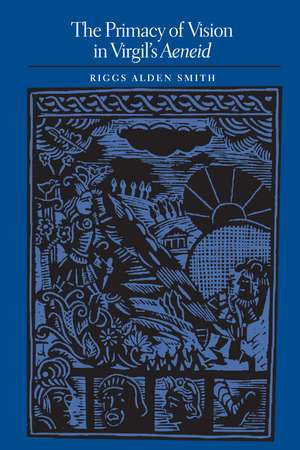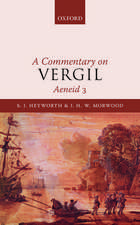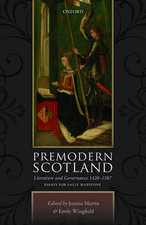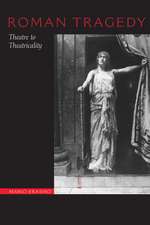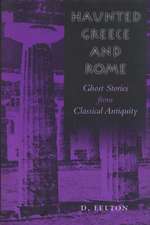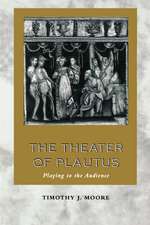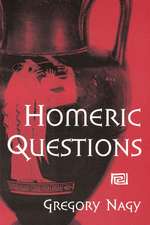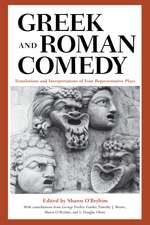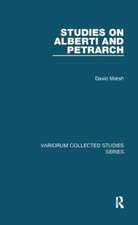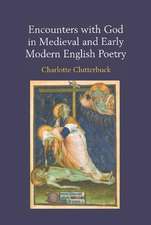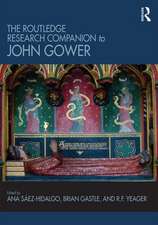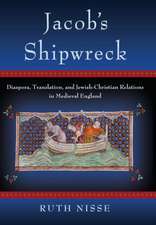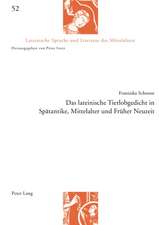The Primacy of Vision in Virgil's Aeneid
Autor Riggs Alden Smithen Limba Engleză Paperback – 15 ian 2006
Working from the theories of French phenomenologist Maurice Merleau-Ponty, Smith characterizes Aeneas as a voyant-visible, a person who both sees and is seen and who approaches the world through the faculty of vision. Engaging in close readings of key episodes throughout the poem, Smith shows how Aeneas repeatedly acts on what he sees rather than what he hears. Smith views Aeneas' final act of slaying Turnus, a character associated with the power of oratory, as the victory of vision over rhetoric, a triumph that reflects the ascendancy of visual symbols within Augustan society. Smith's new interpretation of the predominance of vision in the Aeneid makes it plain that Virgil's epic contributes to a new visual culture and a new mythology of Imperial Rome.
Preț: 203.73 lei
Nou
Puncte Express: 306
Preț estimativ în valută:
38.98€ • 40.70$ • 32.26£
38.98€ • 40.70$ • 32.26£
Carte tipărită la comandă
Livrare economică 04-18 aprilie
Preluare comenzi: 021 569.72.76
Specificații
ISBN-13: 9780292726222
ISBN-10: 0292726228
Pagini: 271
Ilustrații: 6 b&w illustrations
Dimensiuni: 152 x 229 x 18 mm
Greutate: 0.45 kg
Editura: University of Texas Press
Colecția University of Texas Press
ISBN-10: 0292726228
Pagini: 271
Ilustrații: 6 b&w illustrations
Dimensiuni: 152 x 229 x 18 mm
Greutate: 0.45 kg
Editura: University of Texas Press
Colecția University of Texas Press
Notă biografică
Riggs Alden Smith is Associate Professor of Classics and Associate Dean of the Honors College at Baylor University.
Cuprins
- Preface and Acknowledgments
- Text and Art Acknowledgments
- Abbreviations
- Chapter 1. Prophaenomena ad Vergilium
- Theory
- Theoria
- Ante ora patrum
- The Scope of the Argument
- Chapter 2. Ruse and Revelation: Visions of the Divine and the Telos of Narrative
- Seen/Unseen
- Gods Revealed
- A God in the Midst
- Chapter 3. Vision Past and Future
- Hector and the Penates
- Hindsight to Foresight: Andromache and Aeneas
- Imago Creusae
- Vision and Temporal Modality in Aeneas' Katabasis
- Site/Sight of Rome
- Conclusion
- Chapter 4. Hic amor: Love, Vision, and Destiny
- Aliud genus officii: Vision and the Second Favor
- Viewpoints of Departure: Deception, Vision, and the Separation of Dido and Aeneas
- Fixos Oculos
- Lauiniaque uenit
- Conclusion
- Chapter 5. Vision's Victory and the Telos of Narrative
- Failure of Rhetoric (Part 1): Effete oratores
- Drances and Turnus: Opposing Visions
- Hercules and Cacus: Light, Darkness, and Diction
- Failure of Rhetoric (Part 2): The Futility of Battlefield Entreaty in Books 10-12
- Failure of Rhetoric (Part 3): Sight Makes Right and the Aeneid's Finale
- Chapter 6. Conclusion
- Notes
- Bibliography
Recenzii
In sum, this book makes an important contribution to the analysis of the Aeneid.... It deserves the close attention and lively interest of all scholars of the Aeneid.
Descriere
A fresh look at one of the masterpieces of Latin literature and how it contributes to a new visual culture and a new mythology of imperial Rome.
